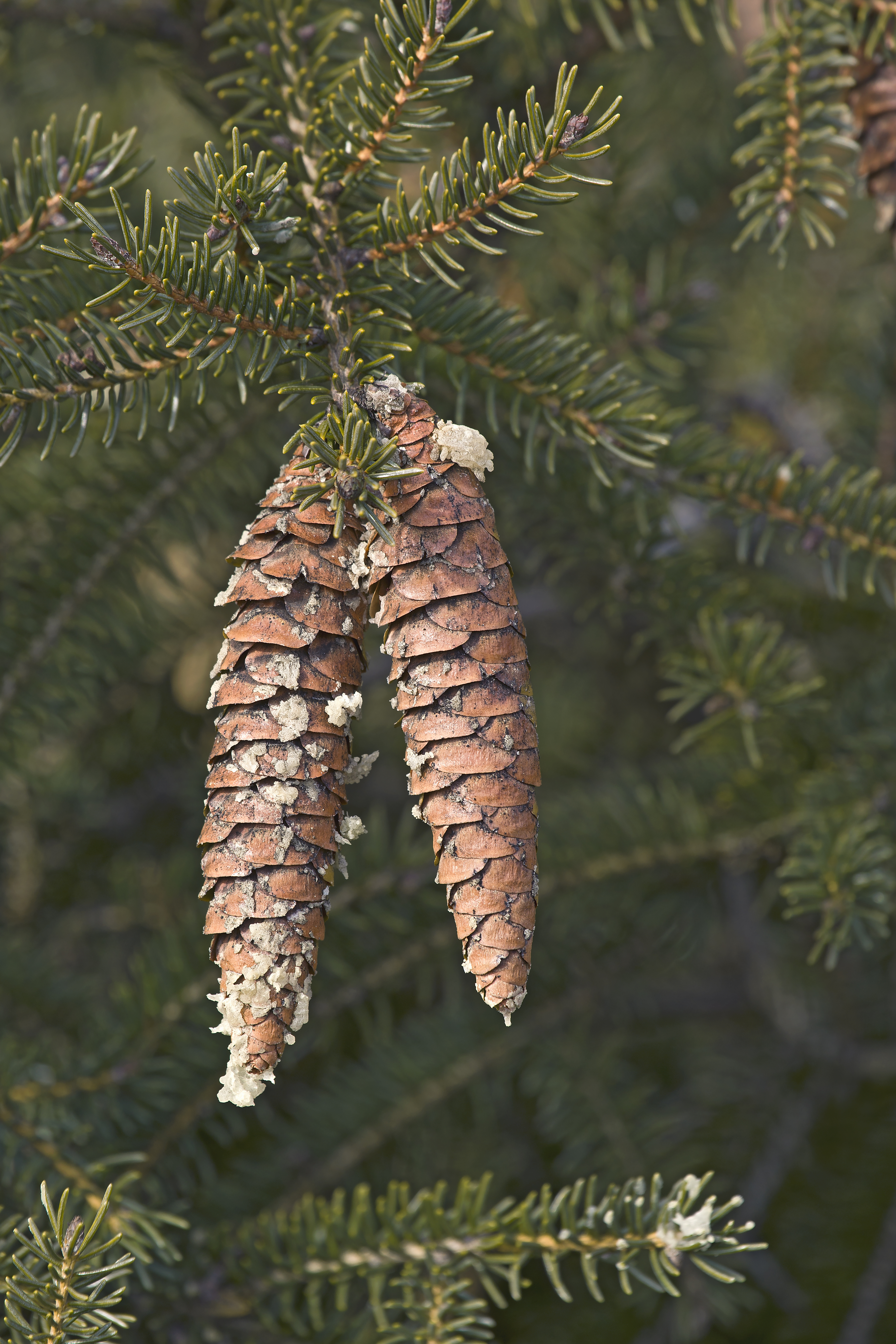Picea maximowiczii
(Picea maximowiczii)

Description
Picea maximowiczii, the Japanese bush spruce, is a species of conifer in the pine family. It is endemic to Japan; its range is limited to Akaishi Mountains, Okuchichibu Mountains and the Yatsugatake Mountains on Honshu. A spruce is a tree of the genus Picea (/paɪˈsiː.ə/), a genus of about 35 species of coniferous evergreen trees in the family Pinaceae, found in the northern temperate and boreal (taiga) regions of the Earth. Picea is the sole genus in the subfamily Piceoideae. Spruces are large trees, from about 20 to 60 m (about 60–200 ft) tall when mature, and have whorled branches and conical form. They can be distinguished from other members of the pine family by their needles (leaves), which are four-sided and attached singly to small persistent peg-like structures (pulvini or sterigmata) on the branches, and by their cones (without any protruding bracts), which hang downwards after they are pollinated. The needles are shed when 4–10 years old, leaving the branches rough with the retained pegs. In other similar genera, the branches are fairly smooth. Spruce are used as food plants by the larvae of some Lepidoptera (moth and butterfly) species, such as the eastern spruce budworm. They are also used by the larvae of gall adelgids (Adelges species). In the mountains of western Sweden, scientists have found a Norway spruce, nicknamed Old Tjikko, which by reproducing through layering, has reached an age of 9,550 years and is claimed to be the world's oldest known living tree.
Taxonomic tree:







